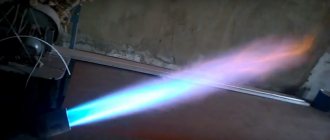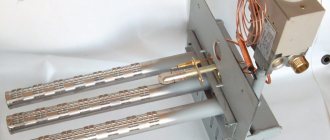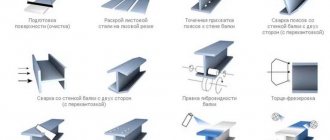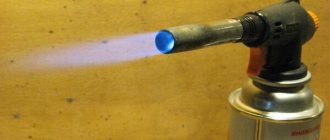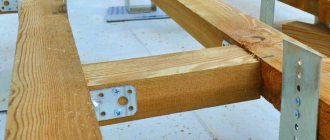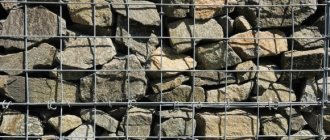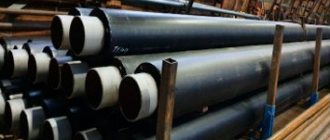Gas melting metal welding involves the use of equipment such as a gas torch. With its help, the metal surfaces to be joined are heated and melted. As a rule, all burners have a simple design, light weight, and are convenient to use. To choose the right tool for the work ahead of you, you should pay attention to the design features, as well as the types of burners.
Main selection criteria
Experienced buyers advise when choosing a gas burner to consider the following parameters:
- – The main thing is to decide on the purpose of purchasing the burner. To perform construction work and simple household needs, different models are needed.
- – For construction work, it is best to choose a gun-shaped torch. It will be convenient to hold it in one hand, while the other can be used to support the material with which you are working.
- – Manufacturers offer compact models for hiking and trips to the country. They can easily fit in a backpack or car glove compartment.
- – Models with a low melting point are suitable for soldering pipes.
- – One of the main parameters is gas consumption. This will allow you to calculate how long one replacement cylinder will last.
Classification
The burner has an injection and non-injector gas supply mechanism. It can work with gaseous consumables, when 2 gases are combined and a flammable mixture is obtained. Liquid injectors use gasoline or kerosene sprayed into a stream of oxygen.
For welding, different designs of torches are used depending on the type of gas consumed:
- propane;
- acetylene;
- argon.
Propane torches for metal welding are characterized by safe operation and simple design . They are used to connect parts with various configurations, thick-walled workpieces made of low-alloy and medium-carbon steels. Propane is supplied from a cylinder or directly from the system through a reducer and hose.
Experts know that burners such as acetylene and argon produce high temperatures. They can melt refractory steels, aluminum and its alloys.
Types of portable burners
Gas burners are devices that differ in design and purpose, but they are united by a common feature - they operate using gas.
Portable devices designed to operate from a small tube filled with propane-butane or other gas should not be confused with ovens or powerful welding units that operate from natural gas or a large cylinder.
We offer a brief overview of the main design elements of an inexpensive gas cartridge burner, which serves as an excellent example of a home device. It may be useful for repairs in the country or for a barbecue.
Using a compact device, you can quickly light a barbecue, heat bolts or nuts in the cold, melt plastic parts, and process heat shrinks. The flame temperature (up to +1300°C) is enough for soldering metal pipes.
This is an example of a burner type that is popular among users, but the range of devices is much wider. Let's look at the most popular types.
Difference by area of use
An open flame may be required at home, on vacation, and during installation work. One of the areas of application is tourism. When camping, use a simple device to light a fire and heat up canned food.
Devices for heating food have a special design - instead of a muzzle-nozzle, there is a long thin gas supply hose to an external burner with a stand
Burners with a directional torch of a “pistol” type are often used in installation work when soldering copper pipes and for bending plastic elements.
The flame, heated to the required temperature, is directed to the mating area of the copper parts, resulting in a strong permanent connection between pipe and pipe or fitting.
High-temperature high-power lamps can also process steel parts, but this requires hard solder and a slightly modified soldering technique.
Gas portable burners are also used for the following work:
- processing of wooden parts;
- lighting a barbecue or a fire in the country without the use of chemicals;
- calcination and cutting of metal blanks;
- singeing animal carcasses during butchering;
- thawing frozen pipelines.
This useful device is always at hand for craftsmen who love to improve their homes and improve their garden plots on their own. The burner can be useful in a car repair shop, during the construction of a greenhouse or other structures.
Division according to the method of attaching the can
The fuel cartridge is a consumable item. As soon as the fuel runs out, it is disconnected from the burner, and a new cartridge is installed in its place.
There are several ways to attach a cartridge to a device:
- threaded - fixed with a thread, in other words - screwed on;
- collet - put on and slightly rotated to one side;
- valve - secured with a retainer;
- pierced - connected with light pressure.
Threaded models are more common than others. They form a strong connection between two elements that can be separated at any time. Punctureable ones, on the contrary, cannot be turned off until the gas in the can runs out.
Devices with collet fixation are quickly installed. To attach them to the cylinder, you just need to put them on and turn them 25-30 degrees to the side
The weakness of collet devices is the rapid loosening of the clamp, resulting in loss of gas.
Valve burners, which are usually designed for heating food, are considered more reliable.
Differences in gas burners by fuel type
Manufacturers use various fuels to fill consumable cartridges. The choice of liquefied gas is based on the purpose of the burners, the required flame temperature, and power. To improve the characteristics of the composition, several different types of fuel are sometimes mixed.
The following combinations of substances are used most often:
- a mixture of propane and butane (70:30) - mainly for summer use, but with a heating device it is also used in winter;
- a combination of propane, butane and isobutane in various proportions;
- a mixture of MAPP - methyl acetylene-propadiene-propane, most often used for welding at temperatures of 1600-2500 ° C.
But there are cans filled with one gas, for example, butane.
An example of inexpensive gas cartridges is “Pathfinder”. Price – 90 rubles. Filling – universal gas fuel, suitable for portable burners, cutters, stoves, heaters
The choice of fuel is important when work is to be done in harsh conditions - in the cold or at high altitudes. And in the summer, any universal gas is suitable for lighting a barbecue or fire.
What are they?
Burners are distinguished by purpose, design, and types of fuel used. The intended purpose of burners largely determines the variety of their types and the conditions in which they are used. So, they distinguish:
- mini-burners (small);
- manual;
- portable travel;
- household;
- "pencils";
- for soldering;
- with gas control;
- infrared;
- alcohol
For example, portable units are used for:
- processing of wood products;
- devices with a “pistol” type directed flame are often used in installation types of work;
- processing of steel parts using solders;
- for making fires;
- for heating and cutting metal fragments;
- for thawing frozen pipelines.
Burners are a useful tool in auto repair shops, during the construction of greenhouses and other household structures. They are also divided according to the methods of attaching the cylinders. Several such types are known:
- on thread;
- collet - put on and turn a little;
- valves - on clamps;
- pierceable - connection with soft pressure.
Most often, threaded connections are used - they are reliable. Punctureable - do not turn off until the gas in the cartridge runs out.
The disadvantage of collet connections is that the fastener quickly becomes loose, leading to gas leaks. Valve types are more reliable.
Manufacturers use various types of flammable substances to inflate cartridges. The final selection of flammable substance is based on the intended use of the products, the required fire temperature, and power. To improve the composition parameters, several types of fuel are often mixed. The most commonly used combinations are:
- propane-butane (70: 30) - mainly for use in summer;
- propane, butane and isobutane in various combinations;
- MAPP – methyl acetylene propadiene (for welding).
Cartridges are often produced that are filled with some homogeneous substance. Fuel selection is especially important when work is planned in extreme weather conditions.
How to choose a gas burner for a spray can
This type of equipment is highly autonomous, which expands its scope of application. The simple design reduces the price and reduces scheduled maintenance to a minimum. The use of tight push-in connections ensures safety. Manufacturers offer models with injectors and check valves, working in conjunction with various types of tanks. Which nozzle to choose? It is not difficult to understand this issue. The buyer needs to understand the main purpose, pay attention to the presence of a flame regulator, piezo ignition and evaluate gas consumption. This will help you buy a tool that will last for several years.
Purpose
To light a fire in the country or during a camping trip, you can use the simplest nozzle, which can easily cope with the task or replace the stove if necessary to boil water. Such models have a flame temperature of 500-700 degrees and have a low price. Losing equipment during your next trip to nature will not be a serious loss. Tourists are advised to evaluate the size of the attachments, which should not take up much space in a backpack or car trunk.
For soldering, heating plastic and glass, you can use models with a torch temperature of 1200-1300 degrees. These are the most universal attachments, actively used in construction and in the home workshop. To solve specialized problems, for example, bending reinforcement, you will need powerful models with a flame temperature of 2200-2300 degrees. When choosing a tool, the conditions in which the user uses the burner are also taken into account. When used in conditions of limited space, nozzles with small sizes have an advantage.
Flame regulator
When choosing a universal model that is designed to solve different problems, nozzles with a flame regulator have an advantage. This device allows you to regulate the gas pressure and measure the power of the fire flow and its temperature. Using the regulator, the optimal mode is selected for soldering with copper or tin, heating a rusty part or old paintwork. The wider the adjustment range, the better for universal equipment.
The regulator should have a convenient location and allow you to change the power of the nozzle while working with the tool. Manufacturers who care about their customers put a power scale and direction of adjustment on the valve. This simplifies setting up the burner when performing critical tasks.
Piezo ignition
The piezo ignition system allows you to do without the use of matches when igniting the flame. This increases the safety of use: when igniting, accidental burns can be avoided. Piezo ignition is triggered in the wind and during rain, ensuring the operation of the device in all weather conditions. The spark instantly ignites the fuel, saving the user’s personal time. Piezo ignition must have a reliable and durable switching system: if the button breaks or sticks, then it will not be possible to use the piezo element for ignition. The system does not greatly increase the price of the tool, so it is recommended to choose models with piezo ignition.
Gas consumption
The nozzles are used with cylinders that have a limited fuel supply. The main part of the burners works in tandem with tanks that hold 220 grams of butane-propane mixture. The lower the fuel consumption, the longer the operating time. Consumption depends on the design features of the equipment. The optimal gas consumption is 75-80 grams per hour. This allows you to work for 2-2.5 hours.
Injection type nozzles have a higher flame temperature and power. High-temperature burners consume up to 120-140 grams of fuel per hour. To increase operating time, it is recommended to use 600 ml cylinders with such nozzles, which can hold more than 300 grams of the gas mixture.
Design features and operating principle
Burners vary in design - from basic devices with a nozzle to more complex mechanisms equipped with an air supply device and piezo ignition.
Let's consider the design of a torch designed for welding metal.
Burner design: 1 – oxygen hose connection nipple; 2- nipple for connecting an acetylene hose; 3 – oxygen supply valve; 4 – fuel supply valve; 5 – oxygen channel; 6 – acetylene channel; 7 – check valve; 8 – injector; 9 – mixing chamber; 10 – body; 11- union nut; 12 – seal; 13 – support spring ring; 14 – groove; 15 – tip; 16 – mouthpiece; 17 – additional channel for oxygen; 18 – sealing surface (+)
The design with an injector and check valve increases work productivity and reduces fuel consumption.
Almost all portable household appliances belong to the so-called injection burners, when air is naturally sucked into the burner to support the flame.
Inside, in a special chamber, fuel is mixed with air, as a result of which the fuel ignites after a spark is given.
With the help of adjustment, which not all burners are equipped with, you can achieve the desired size and power of the torch. High-temperature devices have a bluish-blue flame, low-temperature devices have a yellow-orange flame.
From the mixing chamber, the mixture of gases enters the nozzle-nozzle, where it is distributed through the channels. At the end of the structure, at the point where the torch is formed, there are fire holes - the ends of the channels.
Options for nozzles by structure: ring, slot, tubular.
Tips for choosing the best burner
People buy compact hand burners with pleasure, as they have many advantages over liquid fuel, more “serious” devices. They light quickly, hardly get dirty, and require a minimum of care.
Using a manual model is easy: the flame power can be adjusted and the torch can be directed at any angle, which is important when working in cramped conditions
Criterion #1 – scope of use of the device
First of all, you should determine exactly what the gas appliance will be used for, since burners for soldering and for heating food are radically different in both design and parameters.
Tourist devices have the shape of a stand and resemble a household gas stove, on which it is convenient to place dishes with heated food
Construction tools often resemble a gun in shape. When working, it is convenient to hold them with one hand, and with the other at this time you can support the part or bring solder.
Criterion #2 – technical characteristics of the model
Characteristics such as weight and size are important if the burner has to be taken on hikes or often used at home. A heavy tool causes rapid fatigue, while a light one is much more comfortable to work with.
We pay attention to such characteristics as:
- flame temperature – from 480 to 2500°C;
- heating temperature – from 550 to 2500°C;
- power – 0.5-3 kW;
- the ability to connect cans with different fuels;
- method of connecting the cartridge to the burner;
- flame type, torch shape;
- fuel consumption – from 60 to 1000 g/h;
- weight – from 50 grams to 1.7 kg.
If you are purchasing a torch specifically for soldering copper pipes, then a low-temperature model will do.
To cut or weld steel parts, you will need a more powerful machine, usually called a torch or welding torch.
Overview of additional useful options:
It is not surprising that portable devices are popular, but when purchasing, you need to take into account all the nuances, including technical characteristics, design features, efficiency, and ease of use.
Rating of the best gas burners for a can
From all the variety, we can highlight the following models, which are most popular among buyers:
Rexant GT-19
Compact gas burner with adjustable flame level. Butane, propane and isobutane can be used as fuel. Fuel consumption – 80 g/h. Suitable for quickly heating surfaces. The maximum flame temperature is 1400 degrees Celsius. Price in stores – from 500 rubles.
ADVANTAGES:
- conveniently attaches to the cylinder with a click
- lights up the first time
- burns steadily
- There is a ignition button, the piece works properly
- sits tightly on the cylinder
FLAWS
- the gas is regulated very sharply, you need to turn the flame adjustment knob very smoothly
Rexant GT-19
Energy GTI-100
A high-power gas burner that can be used as a blowtorch. The main advantages are ease of use and compact size. Flame temperature – 1300 degrees Celsius. Another advantage is efficiency. Fuel consumption is only 80 g/h. Price – from 600 rubles.
ADVANTAGES:
- steady flame
- economical gas consumption
- presence of piezo ignition
- securely connects to the cylinder
- all plastic parts are located far from the heating point (they will not melt)
FLAWS
- when working with an inclination, preheating of the burner is necessary, otherwise the flame will be unstable
Energy GTI-100
DAYREX DR-45
A convenient burner that ensures safe use due to a safety system that protects connections from fuel leaks. The burner head can rotate 360 degrees without changing the flame intensity. Price in stores – from 700 rubles.
ADVANTAGES:
- made carefully, assembled tightly
- reliable security system
- economical gas consumption
- high power rating
- detailed instructions in Russian
FLAWS
- not detected
DAYREX DR-45
Flame Gun
A burner designed for tourist purposes due to its low gas consumption and compact size. Can also be used when working with metal products. It will be useful for motorists when unscrewing acidified bolts and removing old paint from surfaces. Prices in stores start from 400 rubles.
ADVANTAGES:
- excellent quality
- multifunctionality
- produces a steady, even flame
- easy to turn on and off
- the flame is easily regulated by the valve
FLAWS
- not detected
Flame Gun
Sturm 5015-KL-02
A household gas burner with flame protection from wind, which will be especially useful when lighting fires or barbecues. Fuel consumption is slightly higher than that of previously presented models and is 86 g/hour. Isobutane, propane and butane are used as fuel. Prices in stores start from 550 rubles.
ADVANTAGES:
- using the wheel you can adjust the flame power
- ignition is carried out using a piezo element
- burns steadily when turning in different directions after 2 minutes. warming up
- lights up the first time
- fits tightly onto the bottle
FLAWS
- according to some customers' reviews, it quickly breaks down
Sturm 5015-KL-02
STAYER 55584 MASTER
A small gas burner weighing only 150 grams. There is a function for adjusting the flame strength, the maximum temperature is up to 1300 degrees. Propane or butane is used as fuel. Price in stores – from 400 rubles.
ADVANTAGES:
- reliable assembly
- multifunctionality
- convenient flame control system
- reliable fastening
- Piezo ignition works flawlessly
FLAWS
- not detected
STAYER 55584 MASTER
Kemper Emper 1064 E
A torch used for installation construction work, as well as for soldering copper products. The flame strength can be adjusted, as well as its fixation. The set includes two nozzles. To operate the burner you will need a threaded container. Price in stores – from 2,000 rubles.
ADVANTAGES:
- durability
- light weight
- economical gas consumption
- 2 working attachments
- preheating function
FLAWS
- not detected
Kemper Emper 1064 E
How to choose a gas burner
Tourist burners are the most popular; many buyers who are faced with a choice for the first time sometimes prefer expensive Polish models, which in this situation does not justify itself.
Inexpensive, simple, non-supercharged torch designs are quite suitable for hiking. The cheapest Chinese models can light a fire and heat up food, which you won’t mind losing or damaging in camping conditions.
For use at home and when performing simple repairs, they purchase amateur series instruments, which are more expensive compared to tourist options, but they do not have problems such as melting of the plastic coating of the mouthpiece and disruption of the piezo ignition system.
In order to make a choice of model, the user needs to pay attention to the following characteristics of the device:
- The presence of a control valve, especially when performing a large volume of soldering work.
- To perform fine soldering or welding, pay attention to the balancing and ergonomics of the design, since frequent switching on/off of the torch must be done with one hand.
- Power is selected according to the thickness and materials of the processed products. Burners with a power of up to 0.7 kW are capable of soldering copper wires or burning paint; for soldering steel products up to 3 mm, a power of about 1.5 kW will be required, and powerful devices from 2.0 to 3 kW are used to heat fittings up to 12 mm.
- You also need to know how long the gas cylinder lasts.
comparison table
The following table, which shows the leading characteristics of the models considered, will help the buyer choose a gas burner for a can.
| Model | Fuel consumption, g/h | Maximum operating temperature, °C | Weight, g | Average price, rub. |
| REXANT GT-19 | 80 | 1400 | 135 | 410 |
| TOURIST SUPER JET TT-600 | 77 | 1300 | 180 | 550 |
| Sibrtech 91421 | 73 | 1200 | 166 | 510 |
| Sturm! 5015-KL-02 | 86 | 1300 | 181 | 620 |
| DAYREX DR-45 | 60 | 200 | 705 | |
| STAYER PROFESSIONAL 55580 | – | 200 | 990 | |
| Pathfinder GTP-N05 | 80 | 150 | 910 | |
| matrix 91426 | – | 1450 | 396 | 1 580 |
Indicators related to the flame of the device
gas burner flame
The burner flame power can be low (fuel consumption is 25-400 dm3/h), medium (400-2800 dm3/h) and high (2800-7000 dm3/h). Knowing the maximum and minimum power of a particular burner, you can calculate the fuel consumption and the amount of energy required to meet technological needs.
According to the number of flames, burners are single-flame and multi-flame. If the first type is used primarily for manual oxygen-acetylene welding, the second is widely used for mechanized flame soldering or heating.
Rules for safe use
Gas burners on a canister operate with flammable mixtures and open fire, which is always associated with the risk of fire and thermal burns. In connection with this, even when using the simplest such device, it is necessary to strictly observe fire safety rules.
It is recommended to start using such a torch by studying the manufacturer’s instructions and then strictly follow them when performing soldering work.
When using the burner, do not allow the can to overheat due to its close location to an external source: fireplace, boiler, in the sun or near a fire. Heating the housing can lead to an explosion, which will damage the walls and can cause injury to others with sharp edges.
Professional reusable gas burners require special care, which is also specified in the manufacturer’s instructions. For example, in order to maintain the functionality of the burner, the power and length of the torch, the burner is packaged in a catalytic heating pad.
Welding torches operating on acetylene-oxygen combustible mixture
Oxy-acetylene welding uses the heat generated by the combustion of acetylene in oxygen. In terms of power, such burners are found in two common types: G2A and G3A (low and medium power burners). G2A torches are used when welding thin metal. The kit usually contains several tips of different sizes.
Particularly worth highlighting from this series are burners with a full complement of solid-drawn copper tips. The presence of solid-drawn copper tips in the G2A-mini torch kit allows you to carry out welding work in hard-to-reach places such as corner joints, where a conventional torch would be useless.
And the thickness of the copper tubes of the tips ensures a long operating time without overheating, due to good heat dissipation from the tip.
Do-it-yourself refilling of mini-burner cans
Before starting the refilling process, make sure that the cylinder does not have any remaining gas mixture. It is turned over so that the valve is at the bottom and shaken.
Refilling process for mini burner:
- Take ordinary scales and weigh the empty cylinder so that after the process is completed you can determine the exact amount of fuel mixture filled.
- Connect the container to be filled with a propane cylinder using an adapter.
- Close the valve on the adapter.
- Open the valve on the can.
- Gradually open the valve on the adapter, at this moment gas enters, squeezing the air out of the hose.
- Monitor the filling process and, after completion, disassemble the circuit in the reverse order.
- Disconnect the tourist cylinder.
- Using the shaking method, the presence of gas is determined; the liquid in the vessel should flutter, which indicates the presence of a mandatory free space, which experts call a gas cap.
- Check the valve for leaks with a soap solution. Verification by fire is strictly prohibited.
Advantages
The advantages of this portable equipment are the following features:
- quality of work. The use of such a device allows you to connect sections of pipes and other metal structures with the highest quality and reliability;
- safety. In case of danger, check valves block the gas;
- mobility. You can control not only the power of the device, but also its position relative to the heated area;
- wide range of functions. It is possible to install different nozzles on the same burner. This means that several operations can be performed using one device;
- ease of use. You do not depend on the availability of gas cylinders, power supplies and other heat sources.
What to do if it doesn't burn well
Often users of a gas burner on a can encounter a situation where the gas burner does not burn well. To avoid clogging of the burner nozzle, experts advise filling such devices only with purified fuel mixture used for filling lighters.
A common reason for the mini-burner to stop functioning is the ring in the nozzle falling out, after which the spark does not hit the ring, but flies in different directions, in which case ignition does not occur.
If the ring is lost during operation, it must be replaced by making it from ordinary copper wire.
Tips for choosing
To make the right purchase and not regret it after some time of use, we suggest using a few tips from experienced buyers and experts:
- The first step is to decide on the purpose of using the burner. It can be used for soldering pipes or cooking food on the go.
- Construction models are made in the shape of a pistol, since it is convenient to hold them with one hand and hold the material needed for work with the other.
- Pay attention to the dimensions of the structure if you take the burner with you on hikes.
- It is better to take a model with a maximum melting point.
- If you will be working with pipe soldering, then a model with a low operating temperature is sufficient.
- In order to cut and weld steel products, you should purchase a device with high power, which is sometimes called a welding lamp.
- Look at the gas consumption per minute, since this parameter will determine how long one cylinder will last and when you will have to install a second one.
Sources
- https://ProReyting.ru/oborudovanie/rejting-luchshih-gazovyh-gorelok-na-ballonchik-top-7.html
- https://sovet-ingenera.com/gaz/equip/gazovye-gorelki-na-ballonchik.html
- https://vyborexperta.ru/turism/luchshie-gazovye-gorelki-na-ballonchik/
- https://ewme.ru/gazovye-gorelki-rejting-luchshih/
- https://kotle.ru/gorelki/gazovaya-gorelka-na-ballonchik
- https://oxko.ru/luchshie-gazovye-gorelki-na-ballonchik/
Pros and cons of piezo modifications
For amateurs who periodically carry out welding work, it is convenient to use a gas torch with piezo ignition. It is a can of gas with a nozzle installed on its neck .
The portable welding machine is adjusted by the gas mixture supply screw. Simply press the button and the piezoelectric element produces a spark, igniting the torch. You can work in any conditions, except for cold temperatures below – 20⁰, when the liquefied gas in the cylinder begins to freeze.
The disadvantages of small burners with piezo ignition are their small volume and disposal . The cylinder and nozzle are a one-piece, disposable device. When the gas runs out, the equipment has to be thrown away, having previously vented the remaining gas so that an accident does not occur.
The piezoelectric element for igniting the torch is used on gas nozzles for argon arc and TIG welding. When you press the button, a spark appears, igniting the gas.
